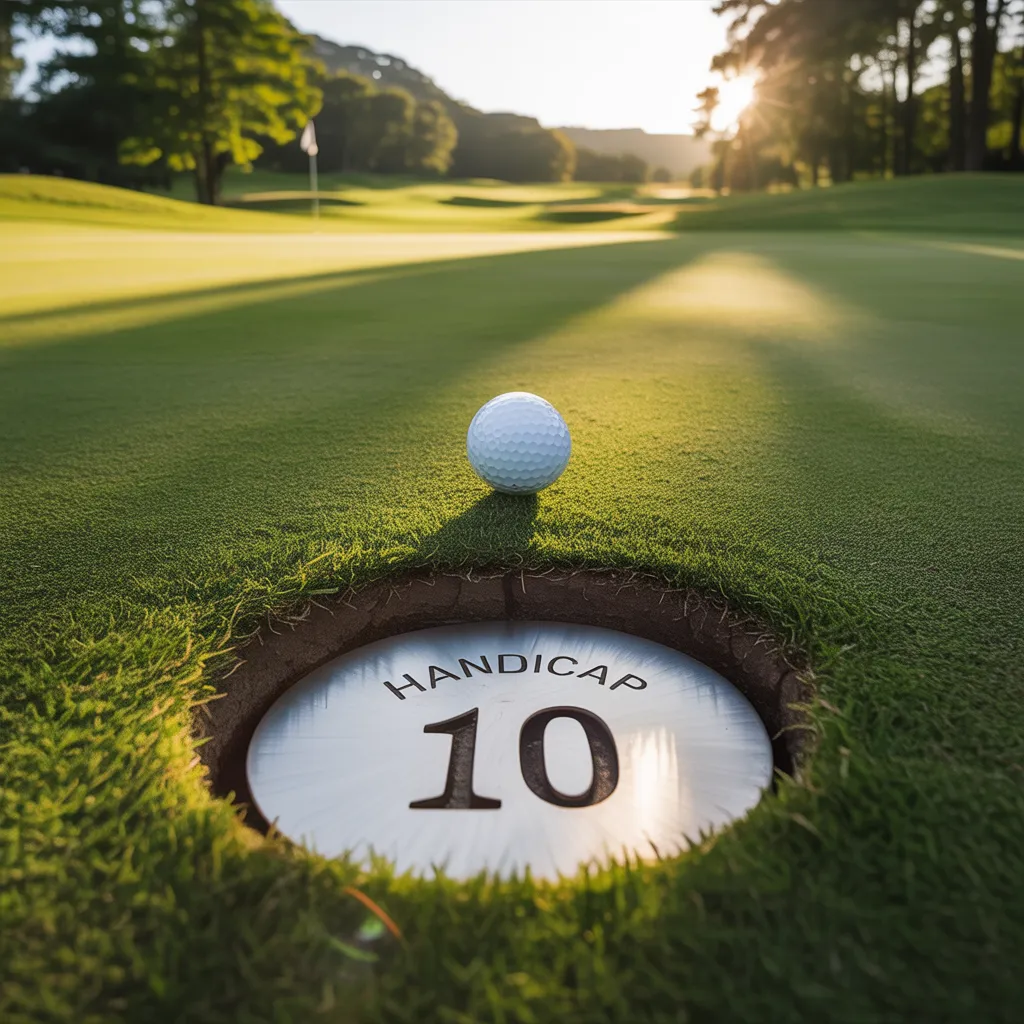A good golf handicap typically ranges from 5 to 10, suggesting above-average skill. A handicap of 0 represents a scratch golfer. Lower handicaps reflect greater consistency and ability to play near or below par.
Discover what a good golf handicap really means and what number you should aim for to stand out on the course.
What Is a Good Golf Handicap?
A good golf handicap typically ranges from 5 to 10, suggesting above-average skill. A handicap of 0 means a scratch golfer, while players with handicaps between 10–18 are also skilled.
How the World Handicap System Defines a Good Handicap
The World Handicap System WHS defines a good handicap as 5 to 10, which indicates a skilled golfer. A handicap of 0 is a scratch golfer, while handicaps of 10–18 are above average.
What Is a Good Golf Handicap for Beginners?
A good golf handicap for beginners typically ranges from 20 to 30. New golfers often start with higher handicaps but can improve with practice and experience.
MUST READ: What Does Handicap Mean in Golf? | Understanding Golf Handicap and How to Improve It!
Is a 10 Handicap Considered Good?

Yes, a 10 handicap is considered good in golf. Golfers with a 10 handicap typically shoot around 10 strokes over par, indicating strong skills and reliability. A player with a handicap of 10 can compete effectively in most club tournaments and has a solid understanding of course management and shot execution. While not elite, a 10 handicap is a great achievement for many golfers and shows above-average ability in both driving and short game.
Average Handicap Numbers for Men and Women
Men:
The average golf handicap varies between men and women. For men, the average handicap is typically around 14 to 16, with younger players generally having lower handicaps and older golfers more likely to have higher ones.
Women:
the average handicap is usually between 26 and 30, reflecting more variation in skill level due to less consistent play and fewer opportunities compared to men. Both averages indicate that golfers in these ranges have intermediate skills and are still refining their games.
Single-Digit Handicap

A single-digit handicap between 1 and 9 is respected because it shows a golfer’s ability to play near par, demonstrating high skill, consistency, and course management.
What the Difference Between Single and Double-Digit Handicaps?
| Aspect | Single-Digit Handicap (1-9) | Double-Digit Handicap (10-20) |
| Skill Level | High skill, consistently plays near par | Above average, still refining skills |
| Course Management | Excellent course management, avoids major mistakes | Still learning to manage the course effectively |
| Consistency | Very consistent, fewer errors | More mistakes and higher variability in performance |
| Competitive Ability | Can compete effectively in tournaments | Competent in casual play, but may struggle in tournaments |
| Strokes Over Par | Typically plays around par or 1-9 strokes over par | Plays 10-20 strokes over par |
How Does Your Handicap Compare to the National Average?
The average golf handicap in the U.S. is around 14-16 for men and 26-30 for women. If your handicap is lower than these averages, you’re considered a more skilled golfer, able to play closer to par. A handicap under 10 is excellent, while 20+ is typical for recreational players.
MUST READ: Why Golf Has 18 Holes | History & Facts Explained!
Factors That Determine a Good Golf Handicap
- Consistency: A golfer who consistently shoots similar scores will have a lower handicap.
- Skill Level: Players with higher accuracy in their drives, approach shots, and putting tend to have better handicaps.
- Course Difficulty: Handicaps are adjusted based on course rating and slope; harder courses can increase your handicap.
- Number of Rounds Played: A golfer who plays more rounds has a more accurate and reliable handicap.
- Experience: More experienced golfers tend to have lower handicaps due to better course management and shot decision-making.
Breaking 90 and 80

Reaching handicap milestones like breaking 90 and 80 shows significant improvement in golf. Key milestones include:
Breaking 90:
- Indicates consistent play with a handicap of around 15 or lower.
- Achieving this means you can play most courses without major errors, typically shooting 9–10 strokes over par.
Breaking 80:
- A major milestone for serious golfers, indicating a handicap of 5 or lower.
- Playing under 80 requires high consistency, strong course management, and excellent short game.
- Both milestones show significant progress and indicate the golfer is moving toward a single-digit handicap.
Steps to Lower Your Handicap and Become a Better Golfer
- Master the Fundamentals: Focus on grip, stance, and swing technique for consistency.
- Practice Your Short Game: Spend time on putting, chipping, and bunker shots to improve scoring around the greens.
- Improve Course Management: Play smarter by avoiding risky shots and focusing on strategy.
- Track Your Progress: Regularly assess your rounds and identify areas that need improvement.
- Get Professional Coaching: A golf pro can help fix flaws in your swing and technique.
- Stay Mentally Strong: Develop mental toughness to stay focused and calm under pressure.
- Increase Fitness: Strengthen flexibility, stamina, and mobility to improve performance and reduce injury.
What Is a Good Golf Handicap for You? Setting Realistic Goals
A good golf handicap varies based on your skill level. Beginners typically aim for a handicap between 20 and 30, while more experienced golfers target under 10. Setting realistic goals involves gradually improving your game through practice and focusing on measurable milestones.
FAQ’s:
1. Is a 10 Handicap Considered Good?
Yes. A 10 handicap is good because it means a golfer usually shoots about 10 strokes over par, showing consistency and strong skills.
2. What Is a Good Golf Handicap for Beginners?
For beginners, a good golf handicap is usually 20–30. With practice, players can lower their handicap into the teens or even single digits.
3. What Handicap Is Average?
- Men: 14–16
- Women: 26–30
4.What Is a Single-Digit Handicap?
A single-digit handicap 1–9 shows high skill and consistency, often allowing players to compete in tournaments.
Conclusion:
A golf handicap is an essential tool for measuring and improving your skill level. Whether you are a beginner aiming for a handicap of 20 or higher or an experienced golfer striving for a single-digit handicap, understanding and tracking your handicap helps you set realistic goals.
With consistent practice, strategic course management, and mental toughness, you can lower your handicap and achieve milestones like breaking 90 or 80. By setting achievable goals and focusing on improvement, you can enjoy the game at all skill levels, making your golfing journey both challenging and rewarding.




Join The Discussion